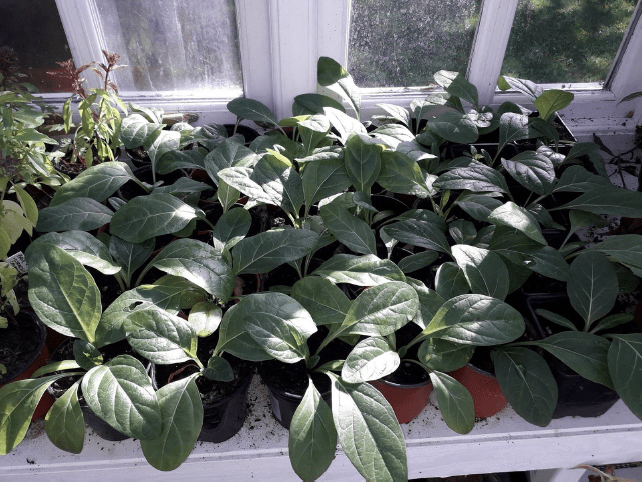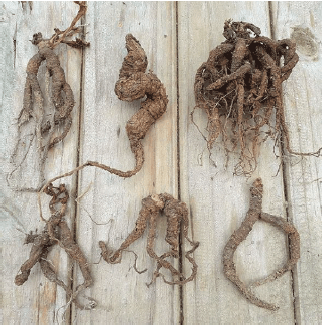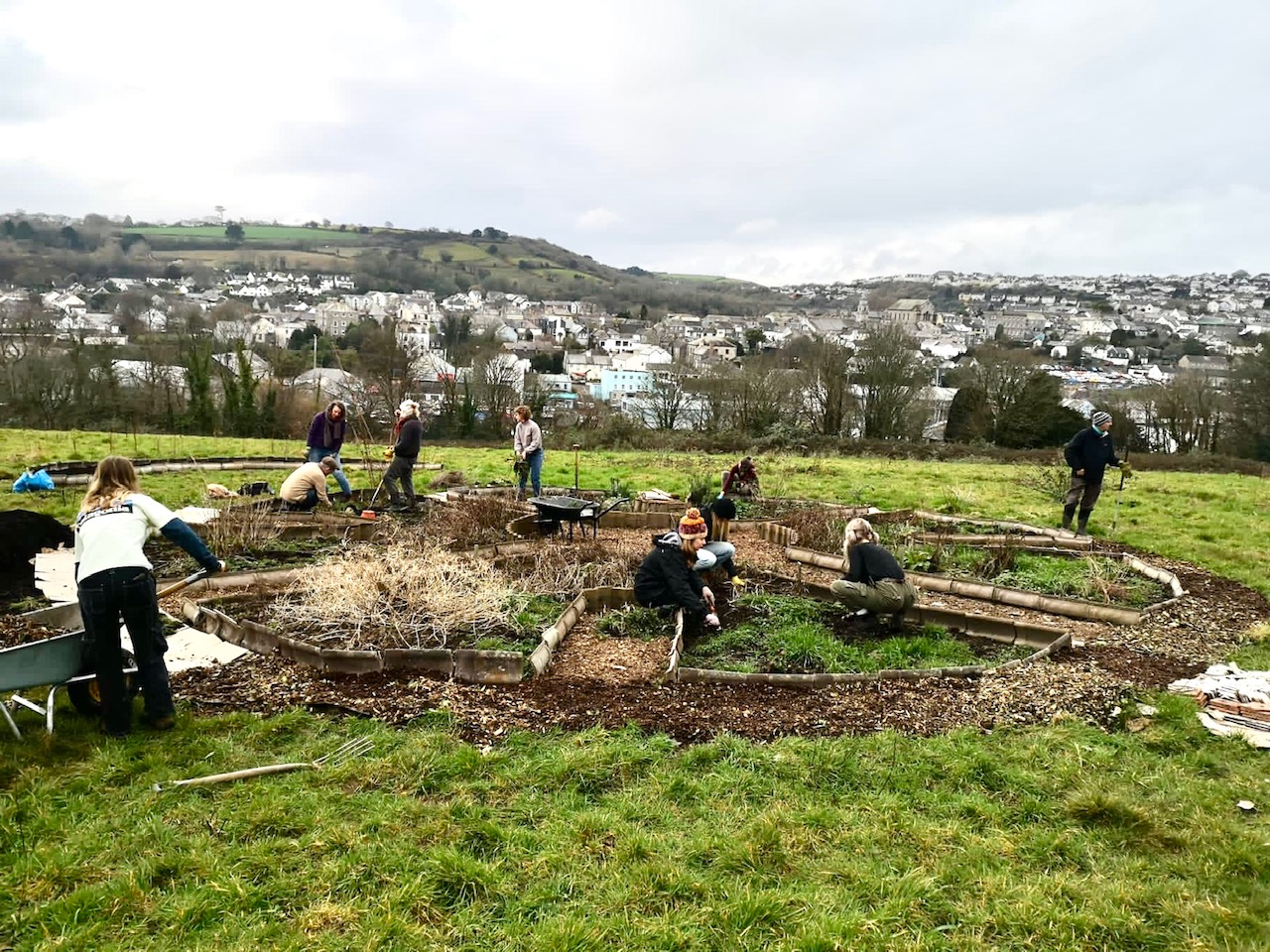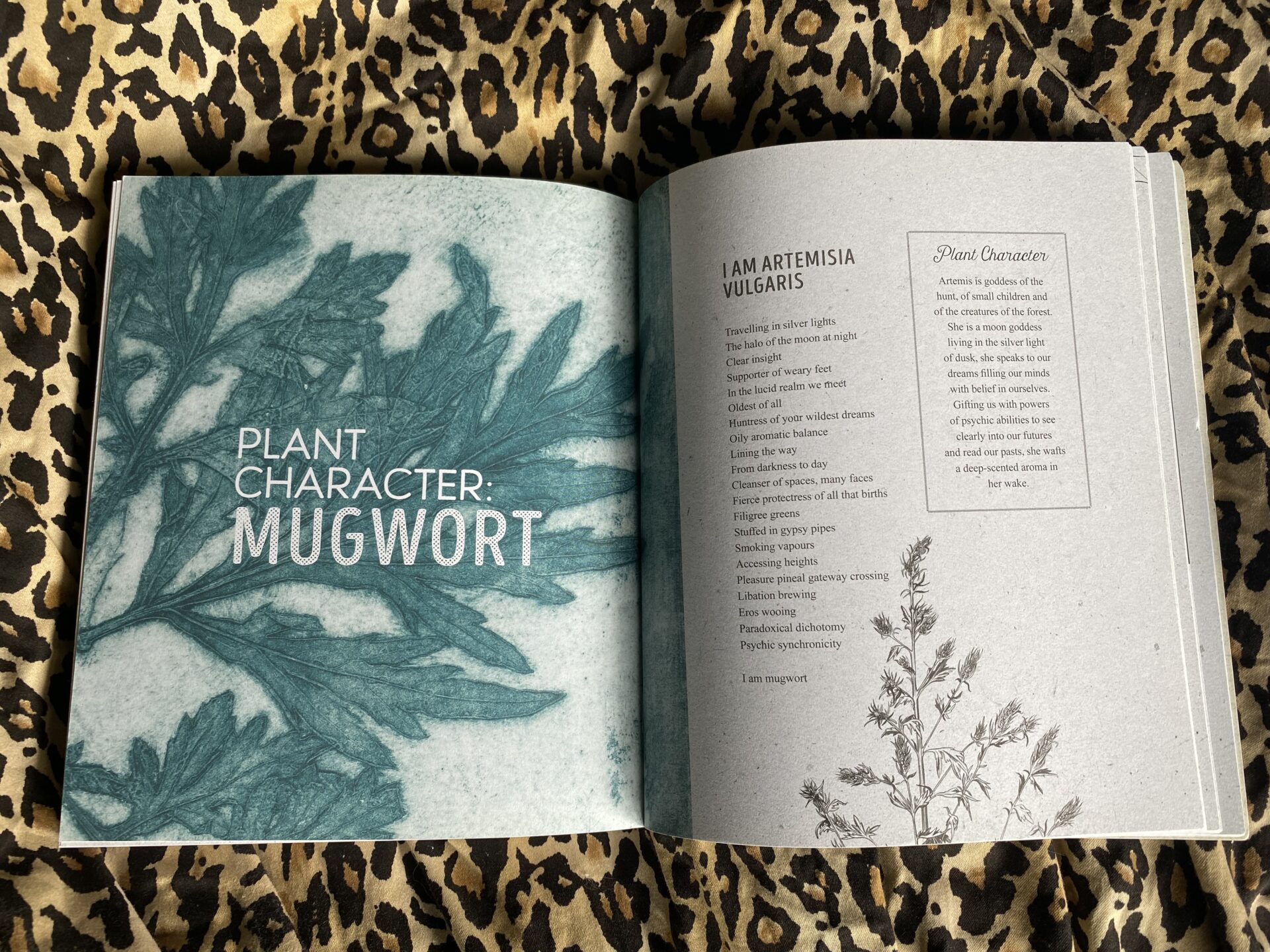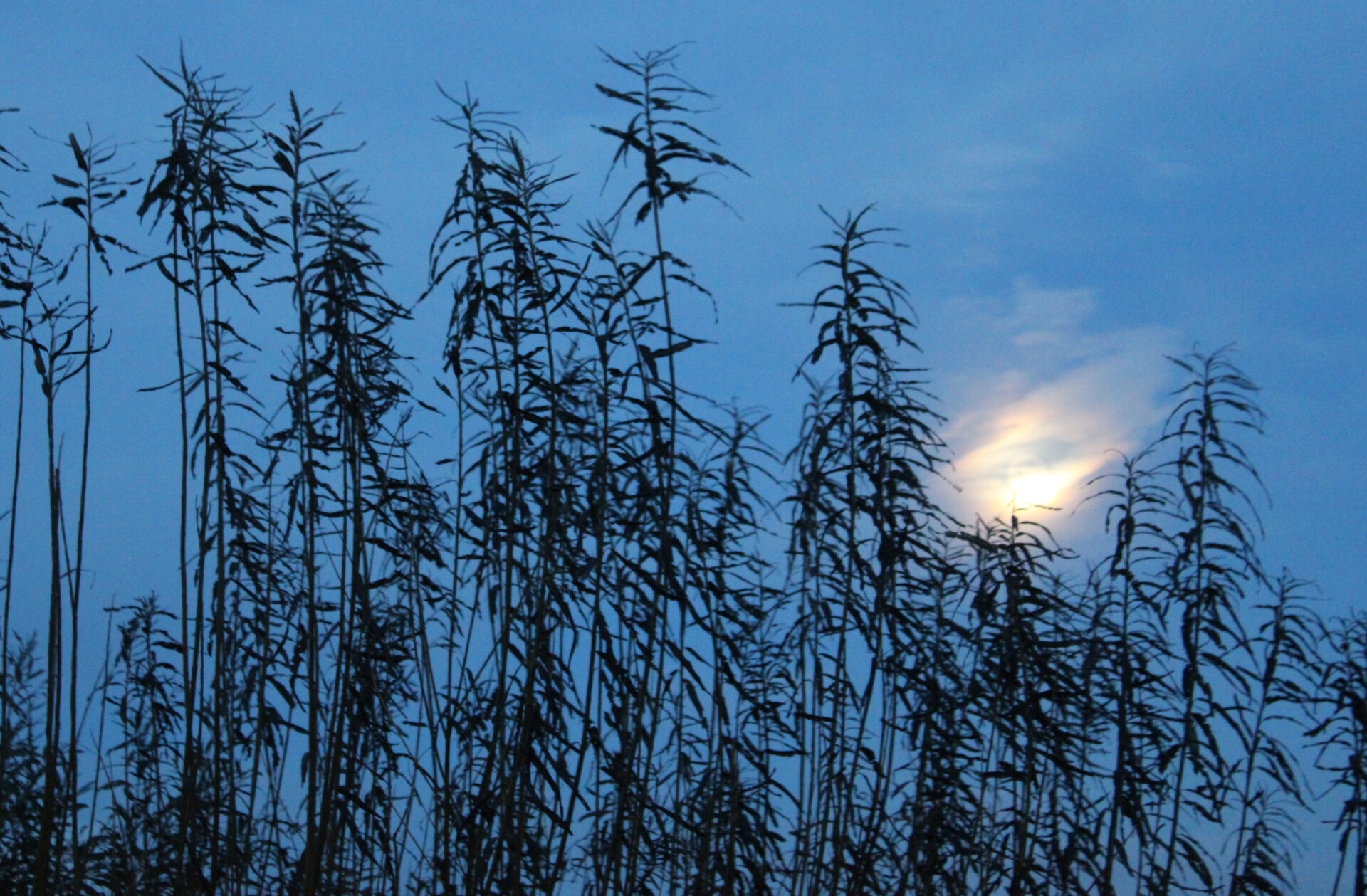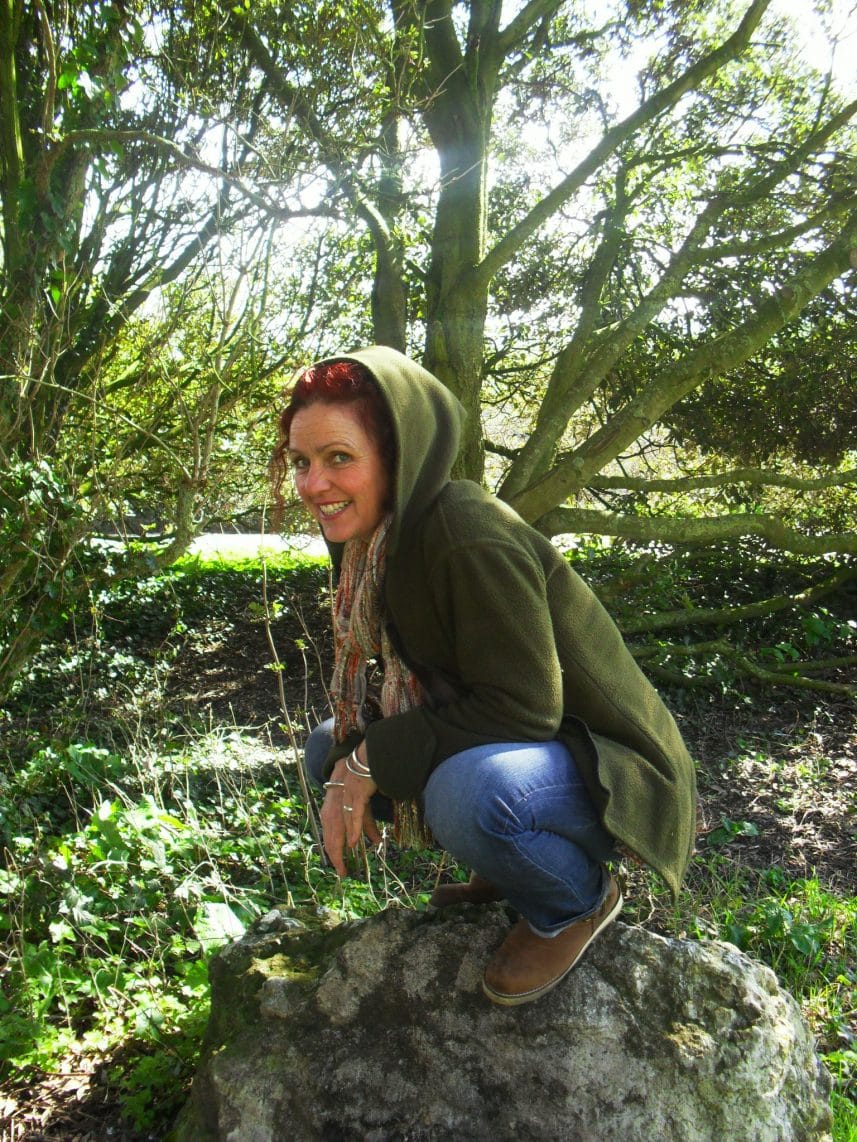
Nicky is a professional gardener and a keen spinner. She has a life long passion for plants. Nicky has run workshops on using the drop spindle and natural dyeing using plant based dyes. Working outside all year round has led to a deep connection to nature and the seasonal energies of the plants she works with. Nicky is currently on her second year apprenticeship in Sensory Herbalism. Her interests include foraging and connecting with the land through her witchcraft practice. Some of her hobbies include the poison plants, particularly Mandrake which she has been growing for about 15 yrs. Nicky is currently converting her vegetable allotment to include more medicinal herbs and dye plants, and is planning on using this as a starting point for herb walks, talks and workshops on completion of her apprenticeship.
My journey with the Mandrake began when I was a student, studying horticulture. Whilst in the horticultural library I came across a book on historical plants, there was a page on the history and folklore of mandrakes.
It was a strange experience as I had never heard of these plants before. Reading the folklore about pulling a screaming mandrake from the earth with a dog, ignited my imagination, and mandrake entered my heart that day. I embarked on a quest to find and read all I could about this most magical and mysterious plant. Of course, this was a long time before the internet, which made finding information quite laborious. I read a few books from the local libraries and quickly exhausted my resources.
I contacted seed companies, by phoning or sending letters enquiring if they had or knew where I could obtain seed. Most couldn’t help me at all, others warned me: Did I know this plant was “deadly” poisonous? I was at a dead end.
Roll on a few years and the age of the internet. The mandrake quest had lain dormant. It was like a Lord of The Rings moment, when the One Ring, after being hidden for so long, reappeared. And so it was with my mandrakes.
Lo and behold, I found a mandrake grower, and even better he was prepared to sell me seed!!! He was very particular who he sold to and even more strict who he sold live plants to. Yet, after much correspondence he sold me 5 seeds.
Those first seeds led to one germinating, and over the next few years through trial and error I gained much experience in propagating and growing.
My internet friendship and obsession with mandrakes grew. At its peak, I had over 100 plants of two varieties: Mandragora officinarum and Mandragora autumnalis. Which had outgrown my polytunnel. In winter the conservatory became their home, with every window ledge and two dining size tables jam packed. Unable to move in the conservatory, something had to be done.
Alongside this, I had been experimenting with mandrake roots to create the famous witches flying ointment, using fresh root and dried root oil infusions. Generally speaking, I found the effect quite mild, and secretly hoped for a much stronger effect. I probably needed larger quantities of root in my infusions. But that would mean sacrificing live plants.
Funny how fate works, the following summer our landlords wanted their house back, and without very much warning we had to move. I made a huge decision to sacrifice about 70% of my mandrake plants and decided to only take 25 or so with me. A few I gave to good friends. I didn’t have time to try selling or advertising them, and we just didn’t have any idea where we were moving or whether we would have a garden even.
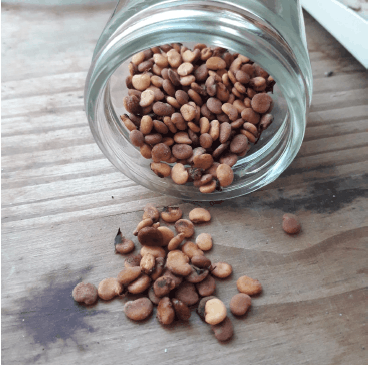
I removed the mandrakes from their pots (wearing my ear defenders of course) and cleaned the soil off them. Luckily the summer is a dormant season for Mandrakes. I had some beautiful roots and put those best shaped roots to one side to dry in their natural form. Other chunky roots I cut up and created mandrake beads, something I had been wanting to do for a long time. The idea to make a necklace with talismanic mandrake beads was something that came to me in a dream once. The rest of the roots were cut and used fresh in oil, and some allowed to dry.
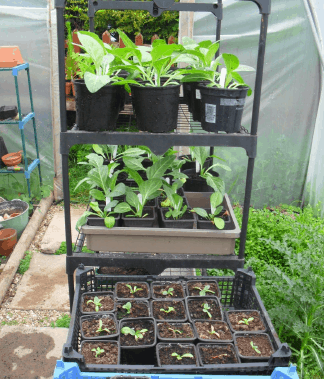
One of the funny side effects I discovered of cutting up a lot of fresh mandrake root, is numb finger tips. The pads of my fingers became completely numb. I had read before that mandrake had been used by Roman surgeons to help anaesthetise, but wasn’t sure how they went about this. Maybe they pulped it and applied, who knows?
We settled in to our new house and, once all had calmed down, I was able to re-experiment with making mandrake ointment again, discovering that it gives good pain relief for back ache also. Oil infusions vary greatly in strength depending on the roots, not all roots are equal and growing seasons, sun, cold and wet make huge variations to their potency.
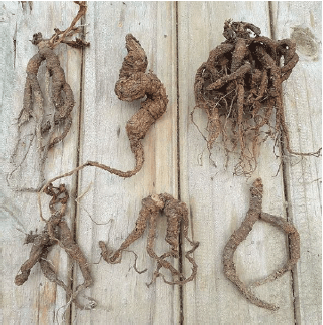
During my time working with mandrake I have made a huge connection with the spirit of this amazing plant; most of all in deep meditation, and through journeying with it. The leaves have a very strong acrid smell, and touching mandrake leaves in a greenhouse, especially at night, releasing their odour it is easy to slip into a different world. I have received many insights and information this way.
It can take on average, in the UK, 4 to 5 years for a mandrake to come into flower, sometimes earlier if you are lucky. And my internet mentor was right when he said you do the happy dance the first time your mandrake flowers. Of course after it flowers, you want it to fruit and that is only going to happen if you have another mandrake in flower at the same time. This usually occurs anywhere between November and January, in the coldest months, when pollinating insects are few and far between. If you are fortunate and the fertility Goddess blesses you, a fruit or two may develop. It is the most exciting thing in the world (apart from finding a mandrake root growing in a human form).
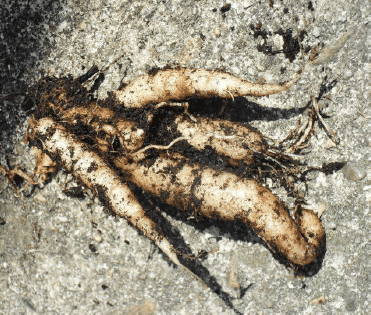
Looking like a medium size tomato they are at first green, and then turn yellow. Then it releases its perfume… it is intoxicating! Somewhere between passion fruit and jasmine. The whole greenhouse is overcome with the scent.
I can’t tell you how exciting this is, it is not at all surprising it has been known by the name ‘Love Apples’.
Over the years I have been very fortunate to have many flowering mandrake and often have surplus seeds for sale, alongside dried roots.
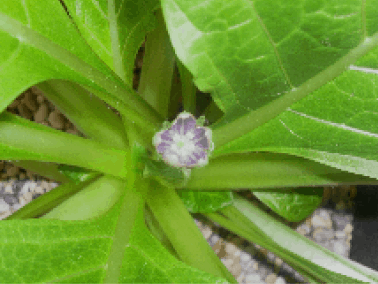
I have a few of my own favourite dried roots that I keep in their own little coffins (boxes) and use these magically. Traditionally mandrake is used for love, fertility and protection magic. But they can be used for so much more, including adding energy to any working you are doing with intent. A relationship has to be built with your root and a genuine desire to draw the spirit of mandrake to be close to you. The dried root is the anchor and house for the spirit whilst you are working with it.
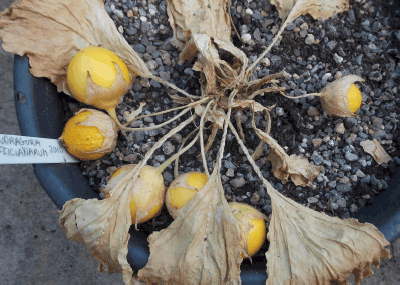
Currently, I am growing three types of Mandrake; M. officinarum, M. autumnalis and M. turcomanica. They are just coming out of their summer dormancy and producing their first leaves now. Already I have been plagued with aphids and slugs, both which love mandrake. Of all the plants I have ever grown, Mandrake is one of the most challenging and interesting. The germination of seed is temperamental, needing exposure to cold. Pests are drawn to mandrake and overnight the leaves will wilt (aphids) be chewed to pieces (slug and snails), the root will rot for no apparent reason (over watering), ants will move into your pots when you keep them dry. They will sulk if you turn the pot around and not put it back at the same angle. Some dormant roots will go into a major sulk and not produce any top growth for a season or two, yet the roots will continue growing. To cap it all, their growing season is the opposite way round to most UK plants: Dormant for summer then sprouting into action as we go into our colder months. Needing to be kept above freezing whilst in flower, or overnight frosts ruin them. Despite these problems, Mandrake has drawn me in and truly taken root in my heart.
